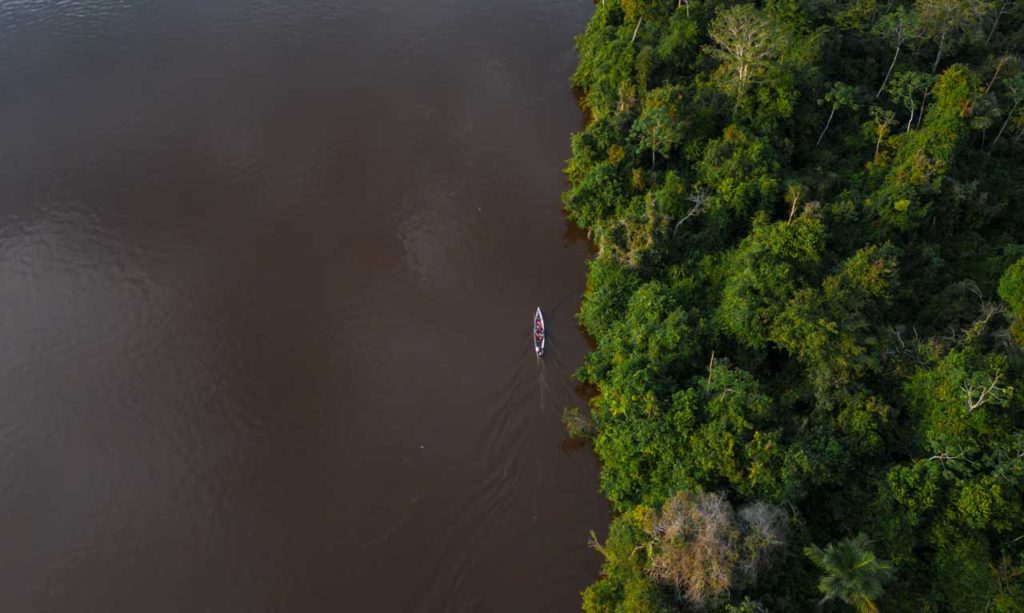
The new freshwater method will focus on setting science-based targets to reduce impacts on freshwater quality and quantity and align with local boundaries.
In brief:
- The Science Based Targets Network has released new guidance for setting science-based targets for freshwater in conjunction with new guidance for companies to assess their impacts on nature and prioritize locations and hotspots along the value chain.
- Setting science-based targets for freshwater can help companies shape more comprehensive and effective water strategies to reduce their impact on freshwater resources, manage risks and bolster climate efforts.
- The freshwater method is consistent with best practices in water stewardship and complementary to existing initiatives and standards, including TNFD, AWS and GRI.
- At this stage, targets can only be set for a company’s operations and upstream value chain. Downstream guidance is currently being developed for later release.
- SBTN will also provide guidance to support stakeholder engagement efforts to improve traceability, which is required to understand the pressures on water quality and quantity in the basins they draw from.
Though water is a critical natural resource that’s central to nearly every stage of the value chain, it’s a major blindspot for many companies. Few are taking sufficient action to reduce their dependencies and impacts, opening themselves up to significant risk. To help companies reduce their impacts on freshwater, manage associated risks and bolster their climate efforts, the Science Based Targets Network (SBTN) has released new guidance for setting science-based targets for freshwater.
Building on the Science Based Targets Initiative (SBTi), SBTN is a multi-stakeholder organization working to equip companies with the guidance and tools needed to set effective, science-based targets for nature and reduce their impacts beyond climate. Its main aim is for the world’s major companies and cities to adopt science-based targets and act on climate, freshwater, land, ocean, and biodiversity by 2025.
The new freshwater method will focus on setting science-based targets to reduce impacts on freshwater quality and quantity and align with local boundaries. It’s being released together with new guidance by SBTN that aims to help companies assess their impacts on nature and prioritize locations and hotpots along the value chain — the first step towards setting integrated SBTs for climate, freshwater, land, ocean and biodiversity. A beta version of SBTN’s land method for setting science-based targets to protect and restore terrestrial ecosystems is also being released. Methodologies for other Earth systems will be released in late 2023 and early 2024.
Quantis helped shape and pilot the methodology underpinning the freshwater targets. We’ve gathered everything you need to know about the new freshwater target-setting framework and what it means for your business.
Why SBTN’s new freshwater guidance matters
Specific, measurable and time-bound targets
Overexploitation, climate change and pollution have created a global water crisis that opens companies up to significant risks in both the near and long-term. Targets are needed to avoid, reduce, restore, and regenerate water resources in areas where companies and their supply chains are situated. Specific, measurable, time-bound and informed by the latest science, the science-based freshwater targets will enable companies to act quickly, effectively and efficiently to reduce their impact on freshwater resources and contribute to global sustainability goals, including the UN SDGs and the Global Biodiversity Framework.
A unified approach to water strategy
In recent years, a number of frameworks and guidance have been developed to help companies reduce and manage their water impacts and risk. However, there has not been a common framework to align standards for the water community. As a result, companies have struggled to understand which methods to use in their strategy and how to apply them. They’ve also faced challenges in developing aspirational and directional targets because they could not benchmark their performance. Together, these obstacles have served to hinder corporate action.
The new SBTN freshwater method aims to provide a unified approach to water strategy. Its methods and guidance are consistent with best practices in water stewardship and complementary to existing initiatives and standards, including the Taskforce on Nature-related Financial Disclosures (TNFD), Alliance for Water Stewardship (AWS) and the Global Reporting Initiative (GRI).
Elevated ambition
Freshwater science-based targets are ambitious and can help companies take a more comprehensive and impactful approach to water stewardship. They can help companies understand key water dependencies and business activity impacts, map and prioritize impacts, develop stronger corporate strategy and decision making, anticipate reporting frameworks and regulations, focus efforts, and maximize impact. It can also help businesses prepare for long-term resilience, innovate, and align nature and climate strategy to operate within planetary boundaries.
Specific, measurable, time-bound and informed by the latest science, the science-based freshwater targets will enable companies to act quickly, effectively and efficiently to reduce their impact on freshwater resources and contribute to global sustainability goals.
What you need to know about the new SBTN freshwater guidance
The first version of the freshwater guidance covers the first three steps (Assess, Interpret & Prioritize, and Measure, Set & Disclose) in SBTN’s five-step target-setting framework. The five steps are:
1. Assess
- Screen for material issues
- Estimate pressures
2. Interpret and prioritize
- Determine target boundaries
- Interpret and rank
- Prioritize
- Evaluate feasibility and strategic interest
3. Measure, set, and disclose
- Measure baseline
- Develop monitoring plan
- Disclose baseline
- Set targets
4. Act
- Avoid impacts from happening in the first place
- Reduce impacts
- Restore ecosystems & regenerate ecological productivity
- Transform by taking actions that contribute to system-wide change and alter the drivers of nature loss
5. Track
- Monitor
- Report
- Verify
The freshwater methodology will enable companies to address freshwater quantity and quality, specifically surface water flows, groundwater levels and nutrient pollution (nitrogen and phosphorus). At this stage, targets can only be set for a company’s operations and upstream value chain. Downstream guidance is currently being developed and will be available in the future.
To get started, companies will need to have a full understanding of their operations and what they buy. Specifically, they’ll need information on the physical volume of raw materials to estimate their direct and indirect pressures. Companies with existing climate strategies may be more prepared for this step as they’ll already have access to this data.
Companies will also need to look at the location of their direct operations and upstream value chain activities. While climate is a global issue, nature is highly contextualized. Companies will need the exact coordinates for their sites in order to understand the pressures on water quality and quantity in the basins they draw from. Because companies will also need to know the origins of purchases in their upstream value chain, traceability is an important component of the process, and it will require engagement and collaboration with their suppliers. SBTN will provide guidance to support companies in their stakeholder engagement efforts to ensure local and Indigenous communities are consulted in the process.
How the targets were developed
The science-based targets for freshwater are the result of SBTN’s Freshwater Hub, a collaborative effort led by CDP, WWF, the Pacific Institute, WRI and The Nature Conservancy and supported by technical expertise from Quantis, as well as Limnotech, Earth Genome and Future H20.
Quantis developed and piloted the methodology, conducting more than 30 pilot projects with 10 companies to test the framework to ensure it could be applied by business. Insights from the pilots were used to improve the guidance, which was reviewed by over 40 SBTN partners, members of SBTN’s Corporate Engagement Program and more than 60 organizations during the public consultation period.
The targets will undergo a period of review in 2024, during which feedback from additional projects will be collected, to further improve the guidance.
How SBTN’s freshwater guidance enables companies to make progress beyond carbon
The SBTN’s new freshwater guidance is more comprehensive and robust compared to existing frameworks and can help companies shape more impactful water management strategies. It looks at the full water journey alongside other earth system issues, clearly describes steps that companies can take, considers synergies in action plans for other nature impacts, and provides alternative pathways for companies unable to follow more rigorous steps.
The new guidance helps companies focus their efforts, avoid redundancies in their nature strategies, and ensure a risk assessment process for priority locations. It also serves as a starting point for dialogue between companies and their supply chain partners to increase traceability, reduce overall impacts and withdrawals, and improve local practices.
Latest resources

Why an environmental sustainability strategy without nature is incomplete
Businesses have an essential role to play in reversing the trend of nature loss — and a lot to lose from inaction.

Purpose: The 5th ‘P’ in the sustainable food + beverage marketing ...
The 5th 'P' in the marketing mix, purpose, adds depth to product, price, place, and promotion, enabling greater sustainability and impact.

3 key priorities for the sustainable transformation of the chemical se...
Quantis experts have identified 3 pivotal pillars that will play a critical role in shaping the future of sustainable Chemistry.


